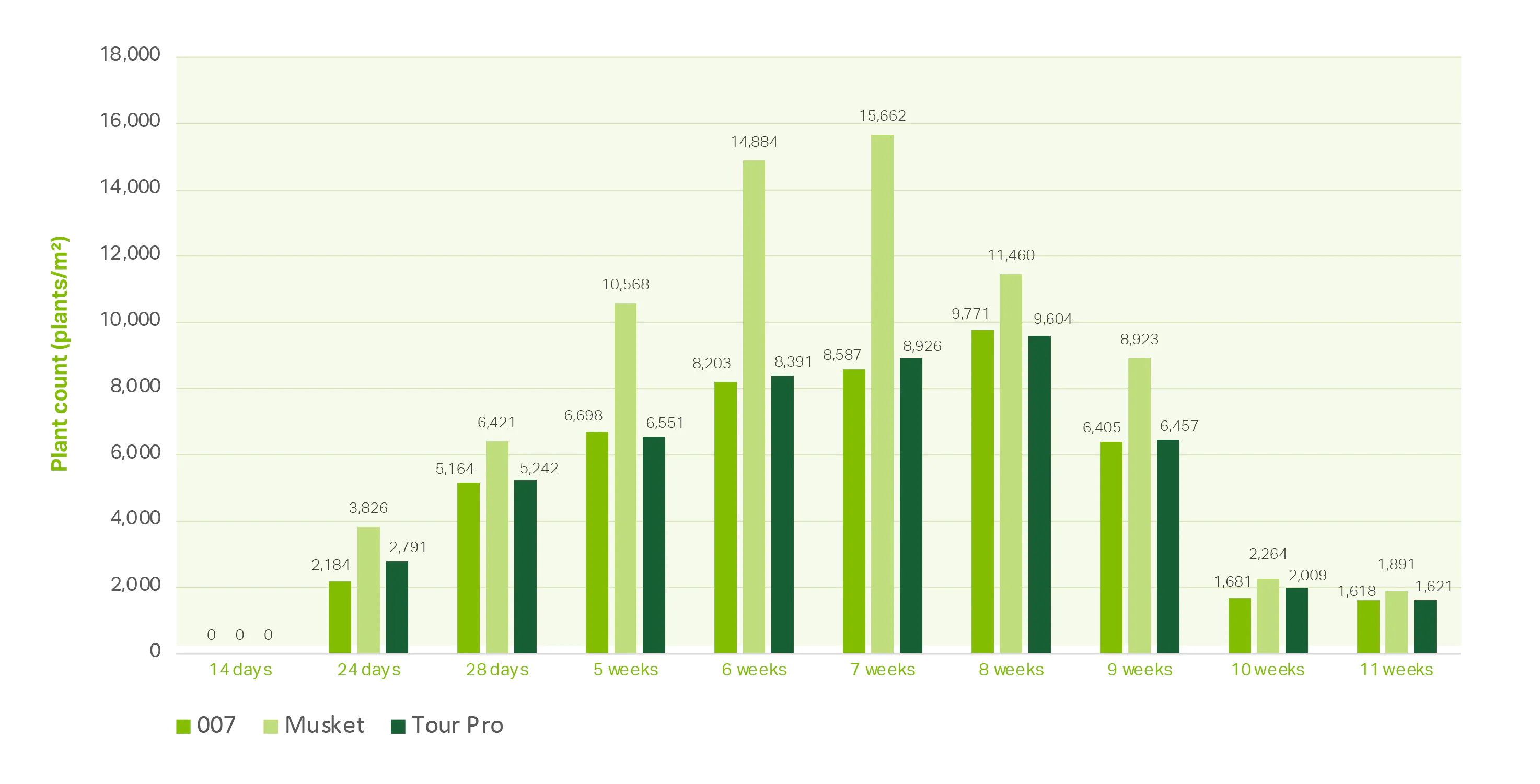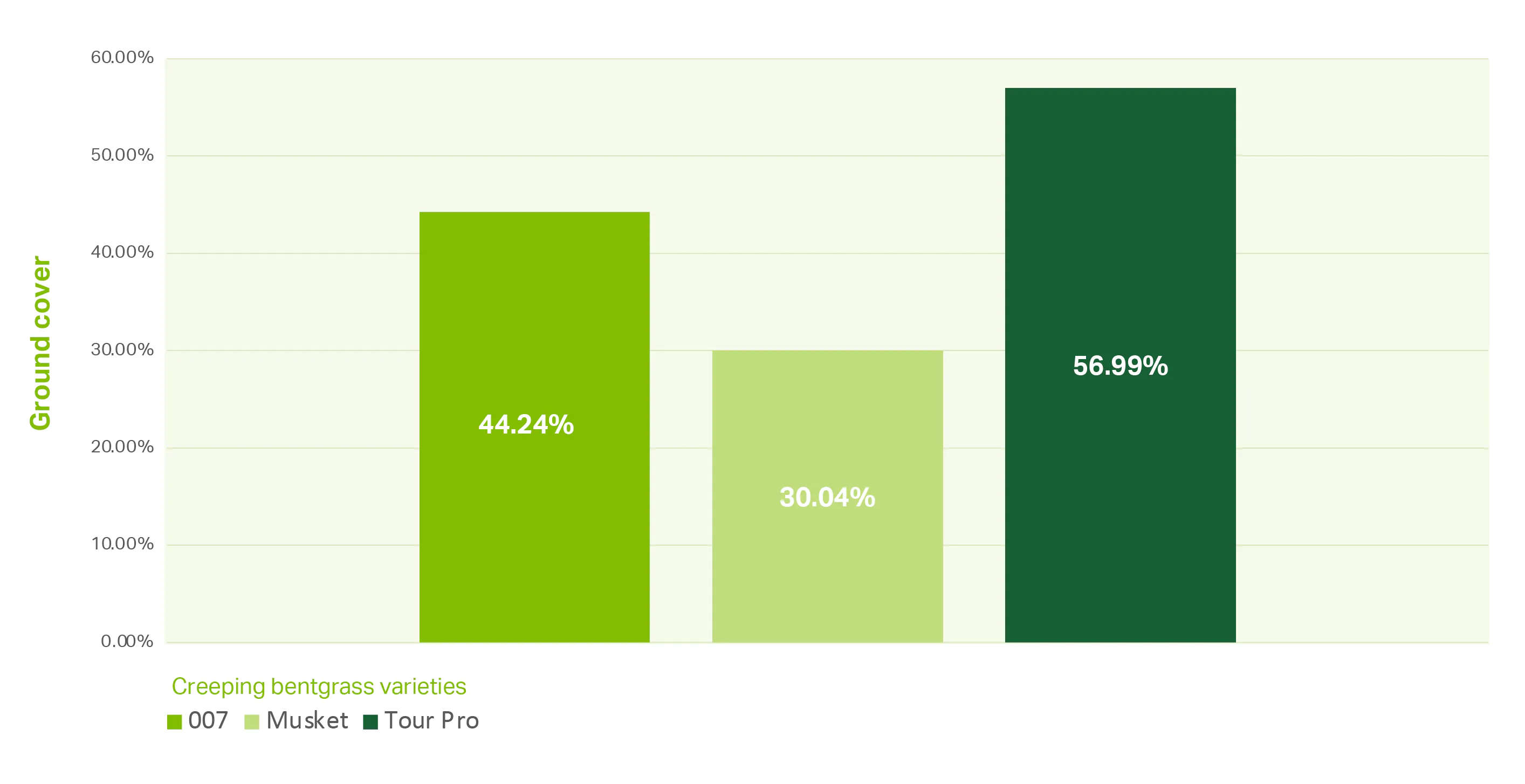Cold-seeding bentgrass research: An experimental view
Germinal Amenity has fresh findings to share following the release of cold-seeding research by Germinal Horizon.

What is cold-seeding?
Cold-seeding entails sowing new seed in an established sward from late autumn to early spring, a window when soil temperatures are much lower than recommended for germination. When cold-seeding, you are committing to sow seed out of season and wait patiently for soil temperatures to increase and germination can occur.
The benefits of cold-seeding
The principal strength of cold-seeding is seedlings emerge in early spring when playing pressure is lower. This gives the seedlings a better chance of establishing as hardened plants that can proliferate and withstand the pressures of the main playing season when it begins.
Germinal became interested in and began advocating this overseeding method as part of our Proactive Seeding campaign, having seen the cold-seeding results achieved by the greenkeepers we visit across major UK golf courses.
We found that courses committing to this method achieved germination of bentgrass seed in late winter/early spring when soil temperatures reached approximately 8°C. While the percentage of germination seemed lower, seedlings exhibited lower mortality and persisted due to less playing pressure.
Therefore, the approach helped maintain levels of desirable bentgrass species in the greens by increasing the population available to outcompete Poa annua during spring. There was also a population of bentgrass ready to populate areas of disease scarring coming out of winter.
Bentgrass research trials at Germinal Horizon Wiltshire
To investigate further, we set up a trial at Germinal Horizon Wiltshire, one of our dedicated research and innovation sites. The trial was conducted to assess the germination and subsequent establishment of selected Browntop bentgrass and Creeping bentgrass varieties at sub-optimal temperatures. The varieties studied were Musket Browntop bent, 007 Creeping bent and Tour Pro GDE Creeping bent.
As close as possible, pots were used to replicate a typical golf green profile. The key to this was recreating the free-draining nature of most golf greens. The trial was hand sown on 17/01/22 at a rate of 8g/m².
Emergence
We assessed emergence every seven days. The first emergence was recorded after 24 days, with all varieties germinating after this period – the soil temperature at this point was 6°C. The main observations from our weekly plant counts were that the numbers increased for all varieties uniformly until week seven.

After seedling mortality, Both Tour Pro GDE and Musket saw comparable plant numbers established. All varieties displayed the lowest plant count numbers at 5°C, which in all cases was significantly lower than at all other temperatures except for 10°C and 12°C. The low plant numbers at the highest temperatures are correlated with higher levels of seedling mortality. This could be caused by the lack of irrigation on trial plots, which was compounded by a lack of rain.
In comparison, the low plant numbers at colder temperatures can be attributed to speed of establishment. 007 and TourPro displayed the highest plant numbers at a soil temperature of 8°C, in comparison to any other temperatures assessed. However, Musket displayed the highest plant numbers at 7°C indicating that Musket commences growth at lower temperatures. Please note that the other treatments tested temperatures rather than varieties and sowing depths.
This supported our on-course observations that bentgrass will germinate at sub-optimal temperatures. While lower temperatures equal a lower percentage of germination, cold-seeding can produce stronger seedlings.
“This demonstrates that sowing outside the recognised season can serve to get a population of bentgrass established in a green,” said Richard Brown when commenting on the trial results.
Vigour
Vigour (plant growth rate) was driven by weather conditions and increased as temperatures rose. Perhaps most interestingly, the main driver of vigour in this study was the variety with Tour Pro GDE, demonstrating the highest scores on average.
“The study demonstrated that sowing depth has a notable impact on the subsequent long-term vigour of bentgrass. Seed sown at 10 mm initially had increased vigour over that sown at 0 mm, but there was similar vigour displayed by 5-10 mm at the early timings. Over time, the 10 mm seed displayed significantly less vigour than the seed sown at 5 mm and 0 mm.
“Despite this increased vigour in early stages overall, 10 mm sowings displayed reduced vigour,” revealed Dr Joanna Matthews, Technical Trials Manager, Germinal Horizon Wiltshire.
There is an indication that a 5 mm sowing depth leads to increased vigour and more testing could be done in this area. But the most important point drawn was that these results challenged our hypothesis that a deeper sowing rate resulted in better establishment when cold-seeding.
This opinion was formed from anecdotal experience on golf courses where good germination was seen after deeper sowing. These results show that while that might be the case, the idea that this maximises bentgrass population following cold-seeding is speculative.
Based on our trail, the ideal sowing depth appears closer to the normal recommended rate of 2-4 mm and validates the benefit of committing to research which we strongly believe in at Germinal.
Ground cover
“Ground cover in this trial was primarily determined by variety, with both Creeping bentgrasses (007 and Tour Pro GDE) having significantly more capacity to produce ground cover than Browntop bentgrass,” Dr Matthews found.

Regardless of the grass species, the observation that, having been sown in January, all species had established plants by May (at which point soil temperatures measured 12°C). From which the rate For groundcover could be assessed, demonstrating early sowing is a viable option. This is instead of waiting for an optimal soil temperature and sowing in early May, which is one train of thought for spring overseeding with bentgrass.
Root depth
When rooting was analysed, 007 Creeping bentgrass was found to have the longest root length on average, which was significantly higher than Musket Browntop bent and comparable to Tour Pro GDE.
This adds credence to the widely held belief that Creeping bent is the more drought and heat-tolerant species. And it has ramifications when considering a species of bentgrass to manage as temperatures in the UK increase. It also demonstrates a greater ability to withstand conditions that work against Poa annua and serve to help outcompete that species on your greens.
Summary
Overall, it was clear that both variety and sowing depth variation can lead to significant differences in establishment trends. The variations were found to be often complex and variety-specific.
The trial did not have access to irrigation and the record-breaking drought in spring 2022 likely exacerbated some experiment results and led to higher seedling mortality rates. Ideally, any future trials would include irrigation when testing the replication of these results.
We intend to continue our bentgrass research trials at Germinal Horizon Wiltshire to bring the most rigorously tested information to greenkeepers. In future, we would like to conduct a longer-term study of the impact of ground cover on golf greens.
If you have questions about cold-seeding or any other aspect of proactive seeding, then contact one of our golf grass experts.


